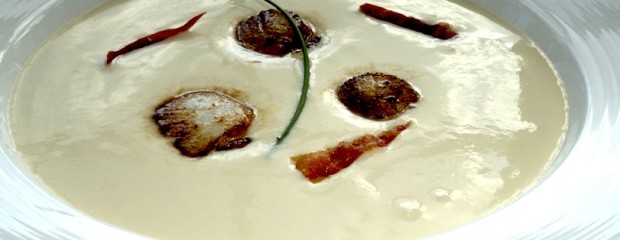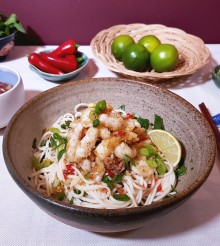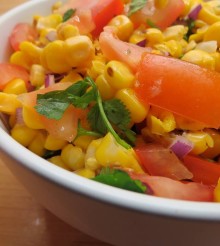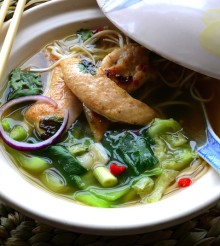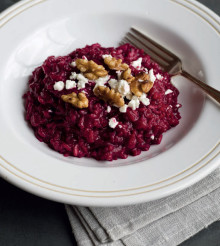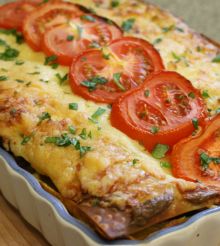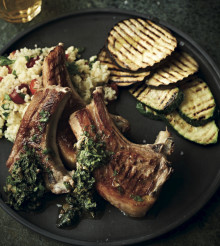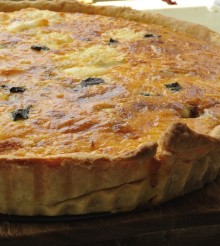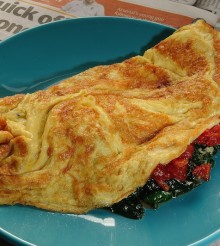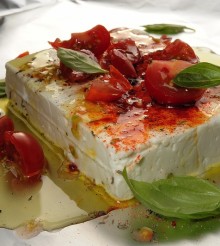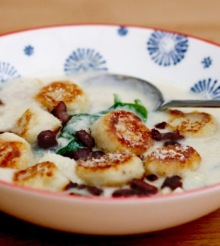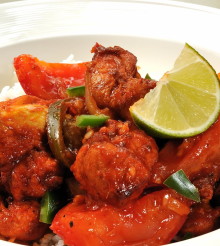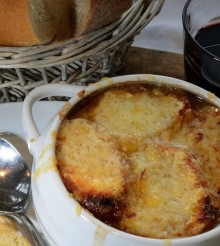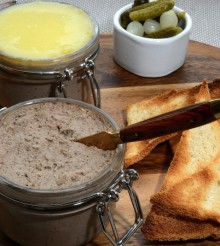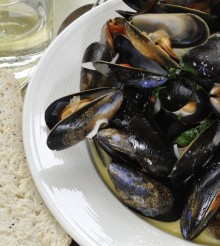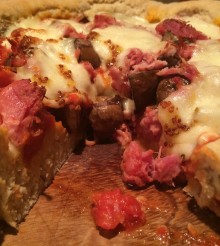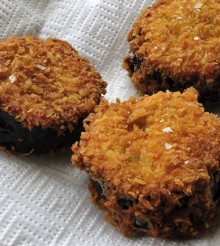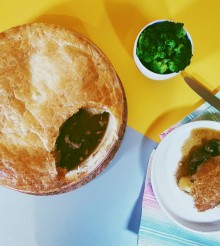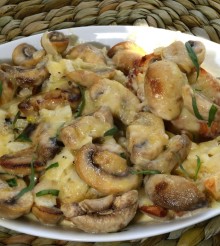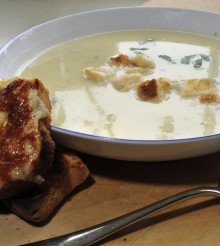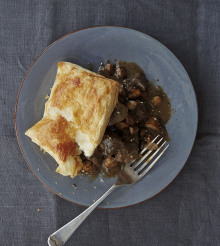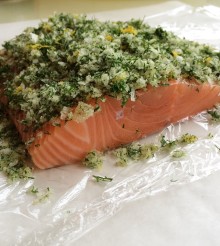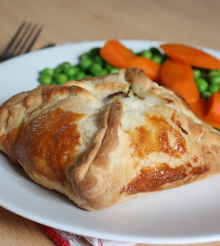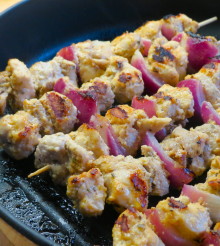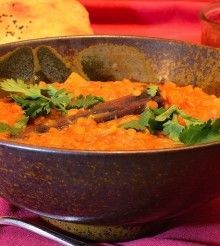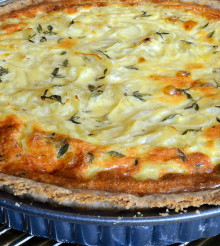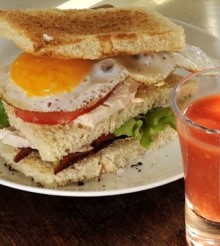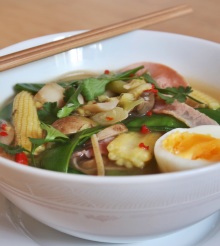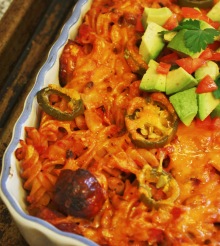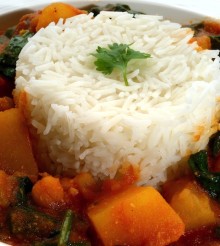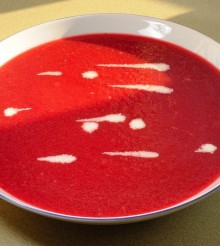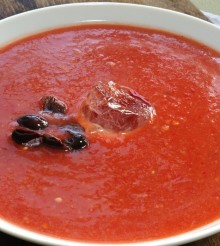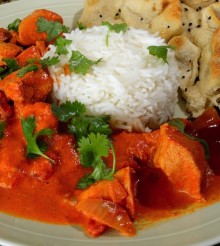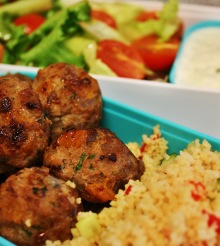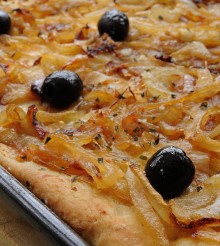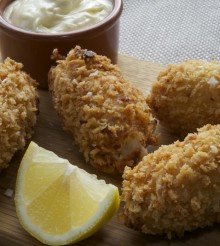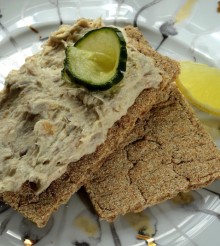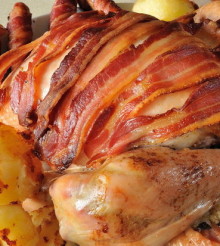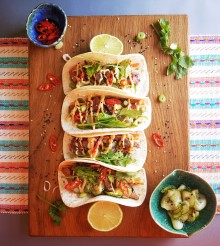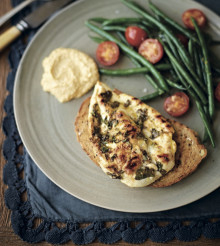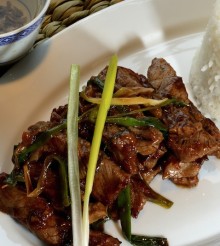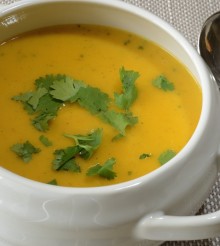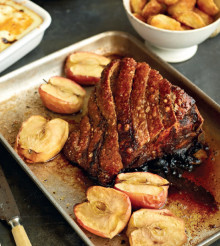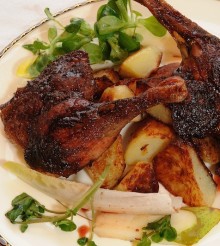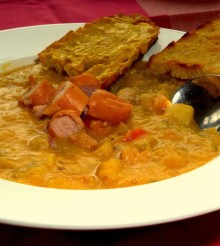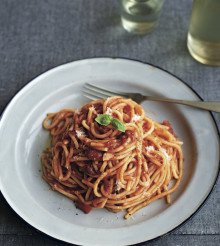The hot scallops and crisp pancetta really take this humble soup to the next level. A perfect start to any dinner party.
Prep
- Buy leeks that have a great proportion of white flesh to green to save wastage.
- Wash the leeks well. Trim off the root and the green and leafy sections. Set aside as you wont be using those bits. Cut the remaining white sections down the middle. Run under cold water and remove any visible grit. Shake, then dry the white sections on kitchen roll. Slice them very thinly on a board using a sharp knife.
- Peel the potato and chop into small bite sized pieces.
- Cut a piece of baking/greaseproof paper that can fit into your pan to help sweat and soften the leeks and potato once you start cooking.
- Fetch and measure the chicken or vegetable stock. You want it to be ‘white’ – i.e. not too strongly flavoured and free from fat and colour.
Cook
- Put the butter into a large heavy based saucepan on low heat. Watch as it melts and adjust the temperature down or whip it off the hob if you need so the butter doesn’t colour at all. This is a white soup!
- Add the leeks to the pan. Stir well with a wooden spoon so they are coated in butter. Press the piece of baking paper (parchment) over them and allow them to ‘sweat’, cook softly and very slowly for 10 minutes. Don’t let them colour. Leeks can lose a bit of their sweetness and take on a bitter edge if they burn even a little bit and you don’t want any colour/taste compromise.. Cover with the lid alone if you don’t have baking paper.
- Peel the parchment away and stir every few minutes to check progress. Add the potatoes. Replace the parchment. Sweat on low, checking and stirring for 5 minutes. Discard the parchment.
- Add the stock, a little salt and white pepper. Raise the heat under the pan. Allow the stock to come to the boil for a minute. Now, reduce the heat to low so it simmers for 15 minutes or so. Check the potatoes with a knife to test for softness.
- Remove the pan from the heat and set up a blender food processor or a very efficient hand blender. Your aim is to liquidise the soup to make it as silky smooth as possible. Allow the mix to cool off a bit first so you don’t burn yourself with splashback. And do it in a number of small batches to maximise the smooth quality. 10 minutes cooling should do it but test to make sure.
- Sit your pan of cooling soup next to your blender (or equivalent). Add the soup to the blender using a large metal ladle – 2 ladles at a time. Blend until very smooth. Have a large clean non-metallic bowl on hand. Pour and scrape the silky puree into the bowl. Repeat this process until all the mix is done but don’t be tempted to short-cut at this stage. If your blender isn’t up to speed you can sieve the soup if you need to.
- To finish, get a large clean pan. Tip the soup into it. Sit it over a low heat. Beat the creams in using a clean balloon whisk. You may not need it all. Let the soup come to the boil as you beat. Reduce the heat and let it barely simmer for 4 minutes.
- If it looks to be getting too thick (chilling will also thicken it a bit) you could add a splash of milk or water. Season well with salt and black pepper. Taste. Remove from the heat. Pour the mix into a clean non-metallic mixing bowl. Set aside in a cool place but not the fridge. Allow to become completely cold. Avoid the mix developing a skin on top (like custard) by sitting a piece of baking/greaseproof paper over it.
- Once the soup is absolutely cold (1-2 hours), remove the paper, discard, cover the bowl of soup tightly with cling film. Chill in the fridge.
Plate
- Ladle the soup into bowls (chilled are best).
- Grill the pancetta for a minute each side or until crisp. Cut with scissors into shards and place onto kitchen towel.
- Melt the butter and oil in a frying pan over a medium- high heat. Once foaming add the scallops, after seasoning with salt and pepper. Cook until golden brown on each side (45seconds- 1minute per side) and place onto kitchen towel.
- Assemble the soup by placing the shards, scallops and snips of chives into the bowl. Serve and enjoy!

